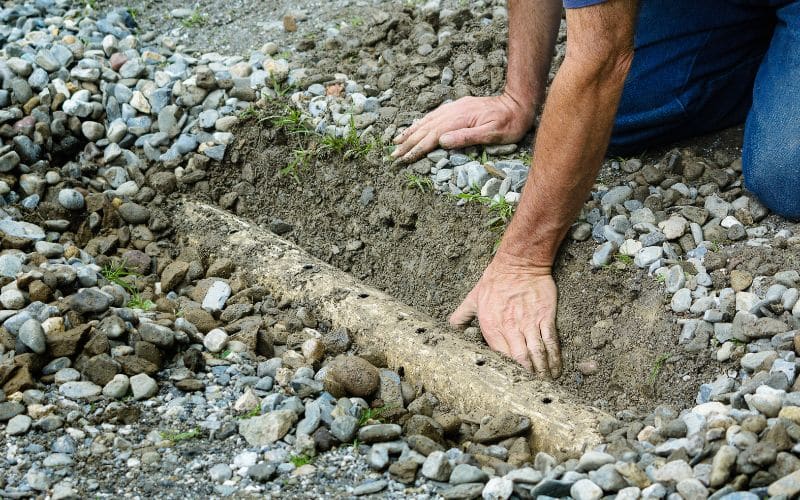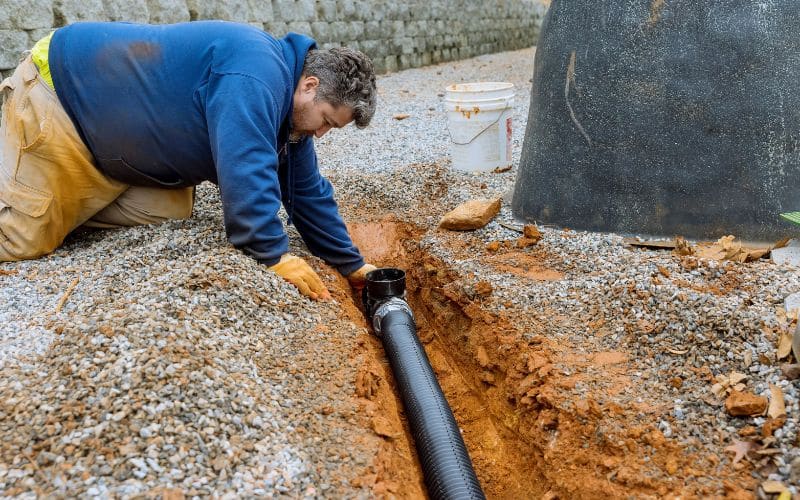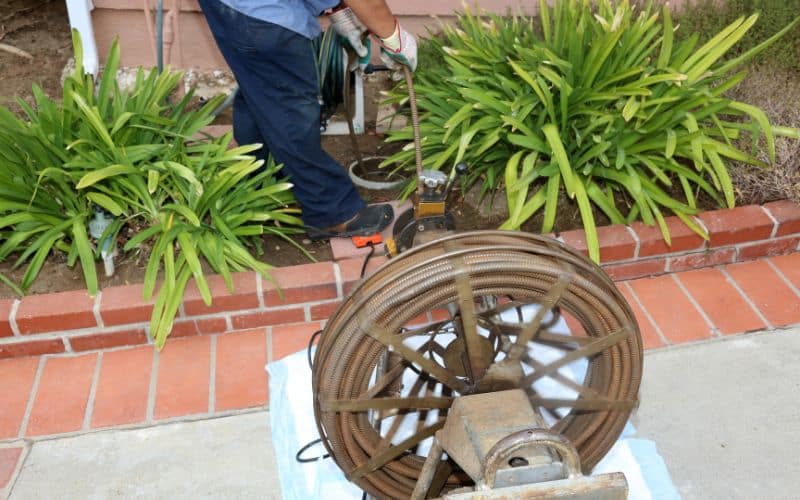
The French drain—a homeowner’s best friend when it comes to managing water flow and preventing water damage. But like any good friend, it needs a little TLC now and then. So, let’s dive into the nitty-gritty of how to keep your French drain in tip-top shape.
Why Do French Drains Get Clogged?
The French drain is a simple yet effective drain system designed to channel and redirect water away from an area prone to water accumulation. However, like any drainage system, it’s susceptible to clogs. Debris, leaves, and even tree roots can cause an obstruction, affecting the water flow and the overall effectiveness of your French drain system.
How Do French Drains Work, Anyway?
Understanding the mechanics of how French drains work can help you maintain them better. Essentially, a French drain is a sloping trench filled with gravel and a perforated pipe that directs water away from your home. The drain may be connected to a gutter downspout or a gutter system to facilitate better drainage.
What Are the Signs of a Clogged French Drain?
When your trusty French drain starts acting more like a stagnant pond than a water diversion superstar, it’s time to investigate. One glaring red flag is water accumulating in places it has no business being—like that flower bed you’ve worked so hard on. Overflowing gutter downspouts are another giveaway. If you’ve got a mini-Niagara Falls situation every time it rains, your French drain is likely begging for a clean-up. And let’s not overlook the subtler signs, such as a noticeable decrease in water flow exiting the drain. This could be your French drain’s silent cry for help.

The Basics of French Drain Maintenance: What You Need to Know
Think of your French drain as a trusty sidekick in your ongoing battle against water woes. To keep this hero in peak condition, regular check-ups are non-negotiable. Make it a habit to inspect for any rogue debris or obstructions that could hamper drainage. Want to test your drain’s mettle? Grab your garden hose and let the water flow. If it starts to back up, you’ve got yourself a clog that needs immediate attention.
How to Use a Pressure Washer for French Drain Cleaning
The pressure washer—a tool that can be both your French drain’s best friend and worst enemy. When wielded correctly, it can blast away debris and minor clogs like a champ. But a word to the wise: Handle with care. The high-pressure water can be a double-edged sword, capable of damaging the perforated pipe that’s the backbone of your French drain system. So, go easy on the throttle and keep the nozzle at a safe distance to ensure you’re cleaning—not destroying—your drain.
When to Rent an Electric Sewer Snake for Heavy-Duty Cleaning
For stubborn clogs, an electric sewer snake is your go-to tool. Available at most tool rental shops, this heavy-duty drain snake can break through tough obstructions like tree roots. Just make sure to follow the manufacturer’s instructions and take necessary safety precautions.
Snaking the Drain: Step-by-Step Guide to Using a Drain Snake
- Insert the Snake: Insert the end of the snake into the drain opening.
- Turn and Push: Turn the snake handle clockwise while pushing it further into the drain.
- Retract: Once you feel resistance, retract the snake, pulling out the obstruction.
- Repeat: Continue the process until the drain is clear.
Can a Garden Hose Help Clean Your French Drain?
Who knew that your everyday garden hose could moonlight as a French drain cleaner? While it may lack the raw power of a pressure washer, don’t underestimate its ability to tackle minor clogs. The water pressure, though modest, can often be just enough to clear out less stubborn obstructions. So, before you go renting heavy-duty equipment, give your garden hose a shot at the title.

How to Unclog a French Drain: Quick Fixes and Long-Term Solutions
When it comes to unclogging a French drain, you’ve got options. For those “I need this fixed yesterday” moments, a good old-fashioned plunger can sometimes be your knight in shining armor. Just a few vigorous pumps can dislodge that pesky clog. But if you’re looking for a more permanent solution, it’s worth considering the installation of a sewer cleanout. This nifty addition provides a convenient entry point for cleaning and snaking your drain, making future maintenance a breeze.
Around the French Drain: What to Look for in the Surrounding Area
The area surrounding your French Drain isn’t just for show—it plays a crucial role in how well your drain performs. Overgrown plants or a build-up of leaves and debris can be like kryptonite to your drain’s superpowers. Make it a routine to clear out the area, ensuring your drain can do its job without any hitches.
Is Your French Drain in Need of Professional Help?
Look, we all love a good DIY challenge, but there comes a time when even the most tenacious homeowner has to admit defeat. If you’ve tried every trick in the book—from electric sewer snakes to pressure washers—and that stubborn clog still won’t budge, it’s time to call in the cavalry. Professional drain cleaners come armed with specialized tools and a wealth of expertise to tackle those head-scratching issues that have you stumped.
Final Thoughts
Keeping your French drain clean is an essential part of home improvement. With the right tools and a little know-how, you can ensure that your French drain remains an effective solution for managing water flow and drainage around your home.
So, roll up those sleeves and get to it. Your French drain will thank you, and so will your peace of mind.








